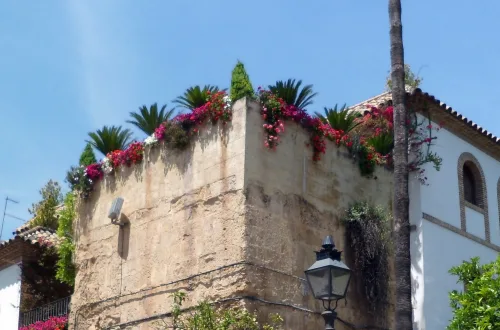
From Monks to Modern Art: A Guide to the Monastery of Santa Maria de las Cuevas or the “Cartuja” of Seville
Nestled on the serene island of La Cartuja, the Monastery of Santa Maria de las Cuevas stands as a beacon of Seville’s illustrious past. Its storied walls whisper tales of monastic life, echoing a history that seamlessly weaves into the vibrant tapestry of modern art. Here, in the heart of Seville, the monastery—affectionately known as “La Cartuja”—captures the imagination with its remarkable transformation.
Once a silent haven for contemplative monks, this historic gem now pulsates with artistic expression, inviting visitors to explore a world where ancient spirituality and contemporary creativity converge. The “Cartuja” of Seville is not just a landmark; it’s a living gallery, a space where every stone and corridor tells a story.
As we step through its grand archways, we witness a remarkable evolution. The monastery’s tranquil cloisters and sacred chapels have given way to dynamic art installations and cultural events. Yet, the essence of its bygone era lingers, offering a unique backdrop that challenges and inspires today’s artistic minds.
- A Storied Past: The Monastery’s Origins
- The Columbus Connection: A Voyage from La Cartuja
- Decline and Rediscovery: The Resurrection of La Cartuja of Seville
- A New Chapter: Embracing Modernity at the Monastery of Santa Maria de las Cuevas
- Architectural Marvels: The Timeless Structures of the Monastery of Santa Maria de las Cuevas
- Art Within Walls: A Fusion at the Monastery of Santa Maria de las Cuevas
- Discover the Essence of Seville at La Cartuja
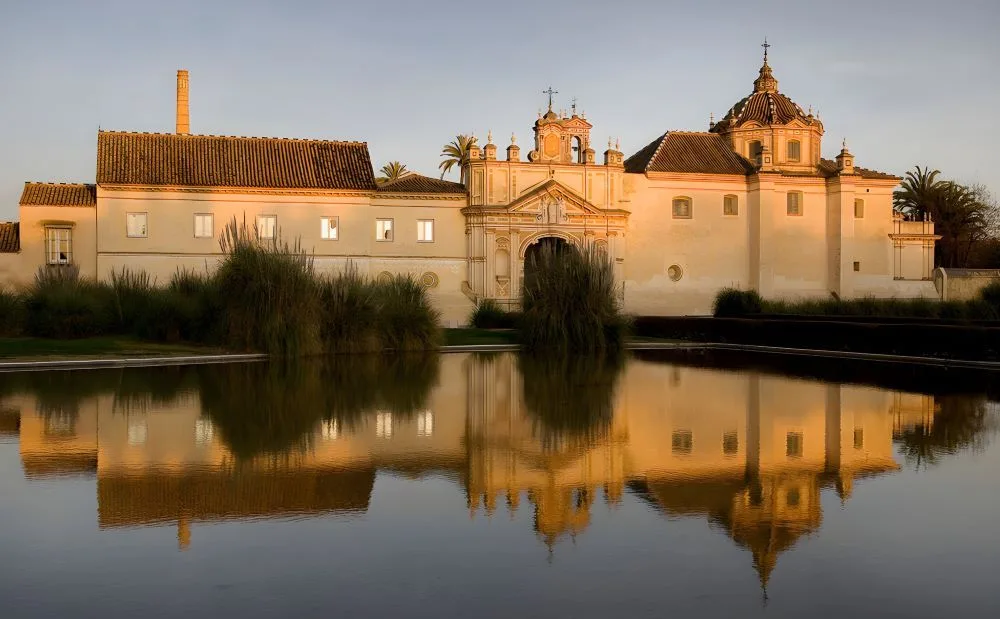
A Storied Past: The Monastery’s Origins
The Monastery of Santa Maria de las Cuevas began as a vision etched in faith and artistry. Founded in the 15th century, it became a cornerstone of Seville’s medieval heritage. Its very walls seem to echo with the fervent whispers of monks and the chime of distant bells. Here, at “La Cartuja,” history’s embrace is ever-present.
This sacred site took shape under the influence of Gothic grandeur, later adopting Mudéjar accents. Each arch, each column, tells a tale of cultural fusion. The monastery’s beginnings are modest, yet its impact is profound. It served as a spiritual hub, drawing in those seeking solace and divine inspiration.
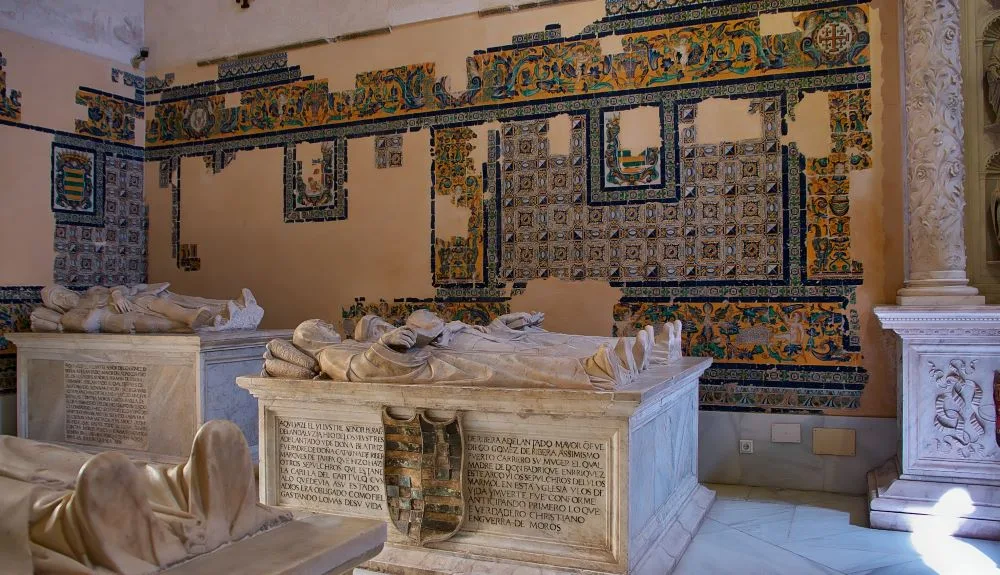
Monastery of Santa Maria de las Cuevas: A Journey Through Seville’s Architectural Evolution
As one wanders through the “Cartuja” of Seville, they witness a masterclass in architectural evolution. From stern Gothic lines to the intricate Mudéjar plasterwork, the monastery is a canvas displaying centuries of stylistic shifts. Each stone is a testament to the hands that have shaped them, from anonymous medieval masons to latter-day restorers.
The Monastery stands resilient, a tribute to the timeless allure of Seville’s history. It beckons travelers and historians alike, offering a silent narrative of the city’s storied past. And as we delve deeper into its corridors, we ready ourselves to uncover more of its enduring legacy.
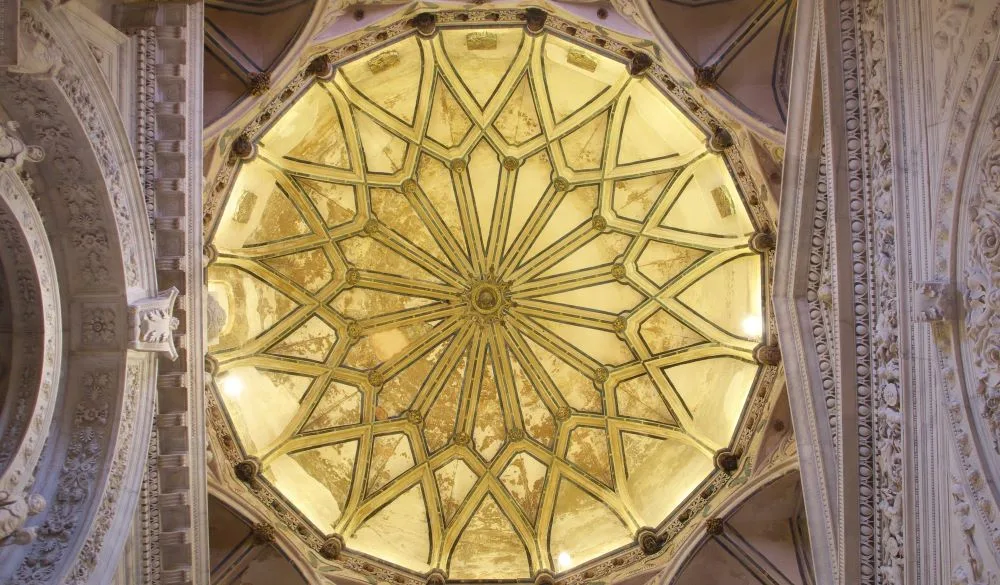
The Columbus Connection: A Voyage from La Cartuja
The Monastery of Santa Maria de las Cuevas holds a chapter in the tale of one of history’s great explorers: Christopher Columbus. Within the peaceful confines of “La Cartuja,” Columbus found refuge and support. The monks, intrigued by his daring vision, became patrons of his epic voyages.
Columbus often walked these grounds, perhaps pondering the vast unknown of the Atlantic. It was here, amid the monastery’s silent prayers, that he planned his journey across the sea. The monks’ belief in his quest proved pivotal. Their backing lent Columbus the strength to chart courses that would reshape our world.

Monastery of Santa Maria de las Cuevas: Where Seville’s History and Columbus’s Voyages Intertwine
The monastery’s connection to Columbus is deeply rooted in the bonds he forged with influential figures who resided within its walls. Notably, Columbus was a close friend of Fray Gaspar Gorricio, a Sevillian monk of Italian descent from Novara. Gorricio, who served as the executor of Columbus’s will and spiritual advisor to his children, provided invaluable support during Columbus’s sojourns in Seville. It was here that Columbus accessed the monastery’s library to gather information for his defense before the scholars in Salamanca, ahead of his maiden voyage.
Columbus also found a temporary home within the monastery’s quarters, a choice that later influenced the selection of the nearby Cartuja Island as the site for the 1992 Universal Exposition. The admiral’s relationship with Gorricio extended beyond friendship; Gorricio aided Columbus in drafting the ‘Book of Prophecies,’ a work dedicated to the Catholic Monarchs which integrated biblical prophecies with the discoveries of new lands.
Another figure of note was Diego Luján, a Madrid-born priest with influential lineage, who had served in several prestigious positions within the Carthusian order and was thrice appointed as the prior of the Sevillan charter house. The monastery also had ties to Rodrigo de Marchena and Antonio Marchena, who both played instrumental roles in aiding Columbus’s endeavors.

Final Voyages to Eternal Rest: Columbus’s Legacy at the Monastery of Santa Maria de las Cuevas
The Monastery of Santa Maria de las Cuevas also boasted ownership of the lordship of Casaluenga, a prosperous domain acquired in two parts during 1456. It was here that Columbus spent considerable time both before and after his groundbreaking journey in 1492, accompanied by his confidants Luján and Gorricio.
In preparation for his fourth voyage, Columbus penned a letter to Pope Alexander VI detailing his discoveries and expressing the need for missionary work in the new territories. He proposed the establishment of a Carthusian monastery on La Española (Hispaniola) and recommended Gorricio as its prior. However, this plan was not realized due to practical constraints faced by the order.
Columbus’s death on May 20, 1506, in Valladolid occurred unexpectedly while in route to King Ferdinand’s itinerant court. Initially interred at Valladolid’s Convent of San Francisco, his remains were later moved to the Monastery of Santa Maria de las Cuevas, likely due to his affection for the place. The transfer was executed by Columbus’s cousin Juan Antonio Colón in 1509.
The Chapel of Santa Ana within the monastery became the final resting place for Columbus’s remains until they were moved to Seville Cathedral. This chapel is also thought to have housed the remains of his brother Bartholomew, although this is likely a confusion with his other brother, Diego.
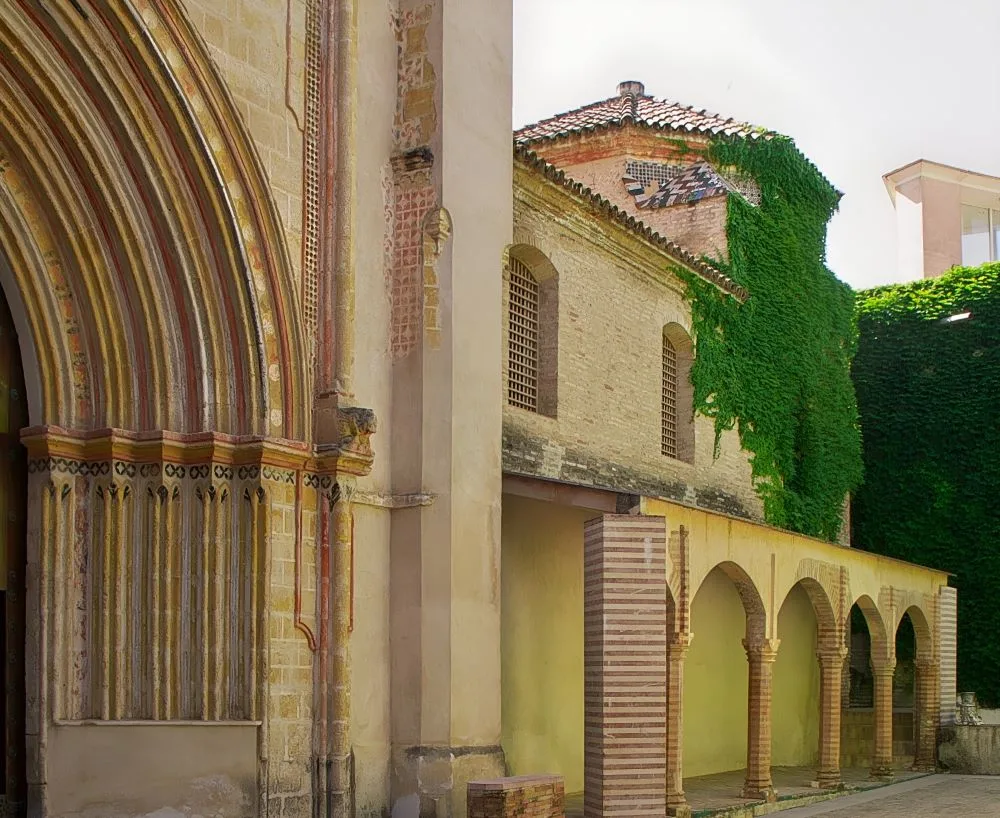
Decline and Rediscovery: The Resurrection of La Cartuja of Seville
The Monastery of Santa Maria de las Cuevas did not escape the tides of change. Time led to its decline, and eventually, its halls fell silent. The once-thriving spiritual center of “La Cartuja” faced abandonment, leaving its stories untold, its beauty unseen.
Yet, the monastery’s tale was far from over. Renewed interest sparked its rediscovery, igniting a journey towards preservation. Recognized for its deep historical roots, the “Cartuja” of Seville gained a new lease on life as a designated historical site.
This recognition marked the beginning of a transformation. The Monastery was set to become a beacon of culture once more. Now, it stands proudly, having reclaimed its place in Seville’s heart—an enduring symbol of the city’s resilience and dedication to its past.
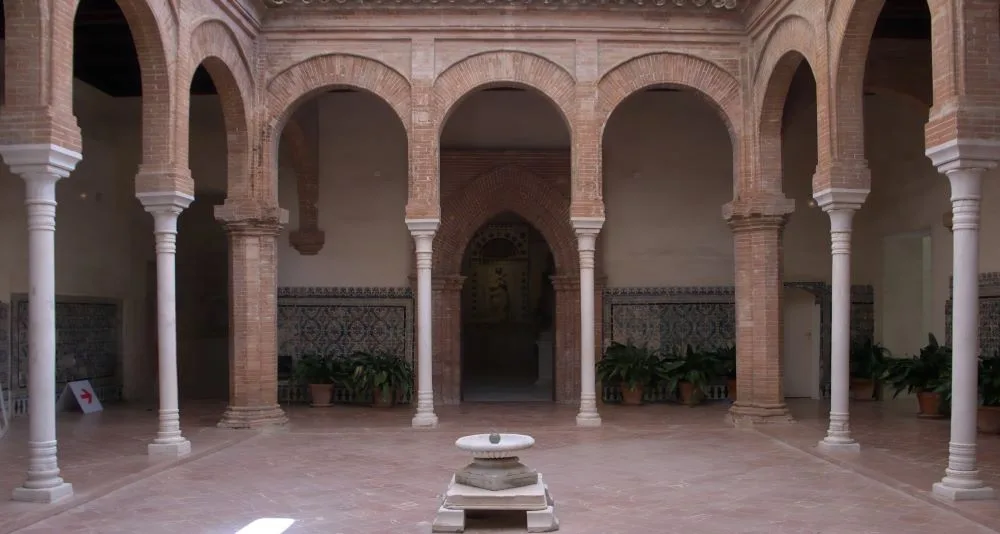
A New Chapter: Embracing Modernity at the Monastery of Santa Maria de las Cuevas
The Monastery of Santa Maria de las Cuevas has embarked on a bold new journey. This historic site, once alive with the chants of monks, now resonates with the vibrant energy of contemporary art. The transformation into the Andalusian Center for Contemporary Art marks a renaissance for “La Cartuja.”
Here, the past and present merge. The center hosts exhibitions that reflect on the monastery’s rich history. Each program, each piece of art, dialogues with the centuries-old walls of the “Cartuja” of Seville. Visitors find themselves immersed in a space where heritage fuels creativity.
The Andalusian Center for Contemporary Art doesn’t just display art; it weaves the monastery’s narrative into its fabric. The result is a living, breathing cultural hub that honors the legacy of the Monastery while projecting its spirit into the future.

Architectural Marvels: The Timeless Structures of the Monastery of Santa Maria de las Cuevas
The Monastery of Santa Maria de las Cuevas is a testament to architectural genius. The church, with its soaring vaults, stands as the heart of “La Cartuja.” It beckons visitors to gaze skyward and marvel at the interplay of shadow and light.
Surrounding the church, the cloisters offer a journey through tranquility. Their columns line the walkways, leading to chapels rich with history. Each corner of the “Cartuja” of Seville reveals a story etched in stone.
Preservation efforts have been paramount. These architectural treasures have been carefully maintained. Some spaces now serve new purposes. Chapels have transformed into exhibition halls. Cloisters host modern gatherings. Yet, the essence of the Monastery remains untouched.
Through thoughtful repurposing, the monastery continues to celebrate its heritage. It stands proudly, bridging eras and hosting a future built upon the foundations of its past.
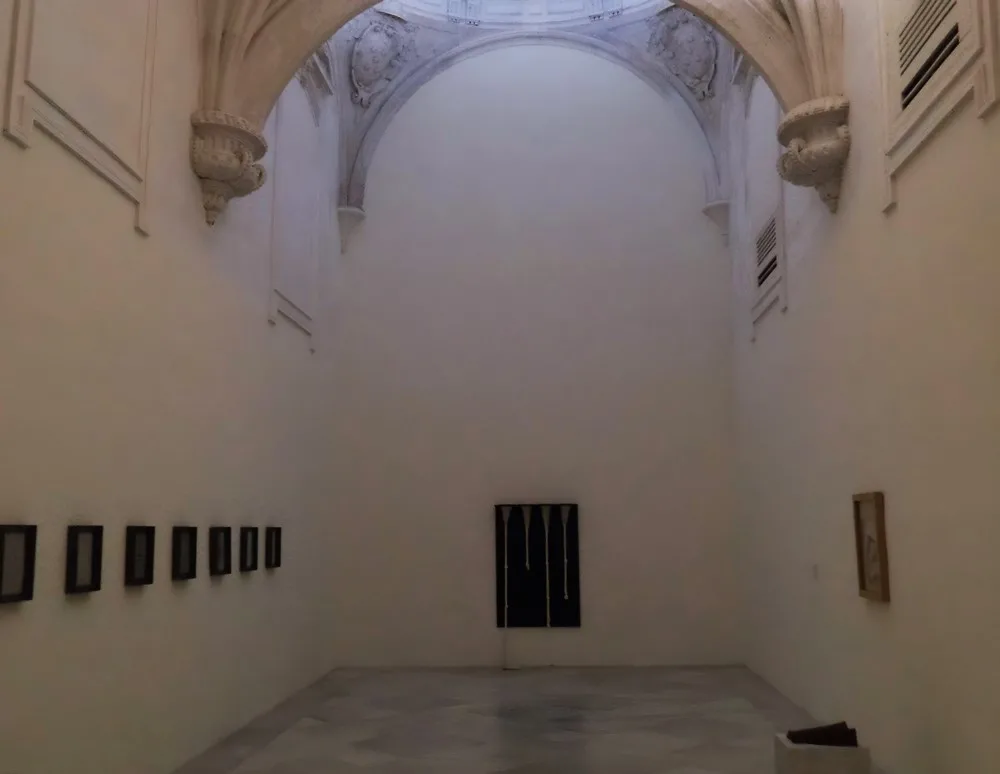
Art Within Walls: A Fusion at the Monastery of Santa Maria de las Cuevas
Within the Monastery of Santa Maria de las Cuevas, a unique fusion takes place. Here, the sacred realm of religious art meets the bold spirit of modern installations. This blend gives “La Cartuja” its distinctive soul.
Visitors encounter this dialogue between eras in every corner. Ancient frescoes and sacred icons share space with contemporary sculptures and paintings. The “Cartuja” of Seville becomes a canvas, celebrating art across the ages.
The monastery’s ancient walls, once home to silent prayers, now resonate with artistic expression. They preserve the past while embracing the new. Each piece, whether steeped in tradition or daring in modernity, finds its place within the Monastery. This harmony between old and new captivates and inspires. It makes “La Cartuja” not just a destination, but an experience—a place where art transcends time.

Discover the Essence of Seville at La Cartuja
The Monastery of Santa Maria de las Cuevas stands as a proud testament to Seville’s rich tapestry of history. It is a place where the echoes of monastic chants blend with the pulse of contemporary art. “La Cartuja” invites exploration and contemplation.
This site captures the essence of Seville’s past and present. It offers a unique experience of tranquility and artistic energy. Visitors to the “Cartuja” of Seville are not merely observers; they become part of its ongoing story.
As you walk the serene cloisters, stand beneath the grand arches, and witness the artistic dialogue within these walls. Make your next trip to Seville a journey through time at the Monastery of Santa Maria de las Cuevas—where history breathes and art lives.



